These investigations are virtual adaptations of the FoodPrints Curriculum
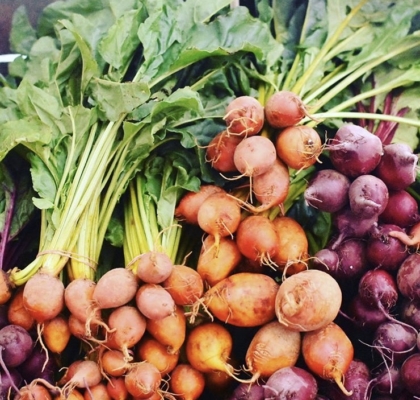
Saying Goodbye to Winter
Investigation Description:
Review with students some of the vegetables we enjoy in the winter.
If possible, have examples of some of them to show; butternut squash, beets, carrots, apples, potatoes (show pictures if you don’t have the fresh produce).
Ask them if they can think of something that these vegetables have in common; most of them are roots or fruits, they have a hard outside, and can be stored for a long time. Have them think of some things they like to eat that include these vegetables; applesauce, apple pie, squash soup, mashed sweet potatoes, etc.
Tell the students that it is now time for us to say goodbye to these winter vegetables because spring is coming and it’s time for new vegetables to grow. Hold up the different vegetables and encourage the students to say goodbye and remind them that they will see them growing in the garden again next year.
If appropriate for your group of students, have them draw a picture of their favorite winter vegetable and share with the class why they will miss it. The teacher should be ready to share a few examples first.
Time: 10-15 minutes
Teacher Materials: Variety of winter vegetables: butternut squash, sweet potatoes, beets, carrots, apples
Student Materials: Piece of paper and writing/drawing utensils (optional)
This virtual investigation is adapted from: PK – Goodbye Winter, Hello Spring
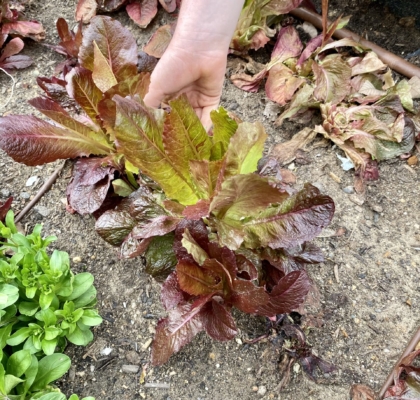
Saying Hello to Spring & Planning a Garden
Investigation Description:
Brainstorm with the students some spring vegetables: kale, broccoli, spinach, lettuce, cauliflower. If possible have some of these to show.
Tell them that it is now time to say hello to spring vegetables, have them join you in saying hello. Review what the weather is like in the spring, and discuss why we grow these vegetables in the spring.
March is a time for gardeners and farmers to plan and begin to plant!
Have the students share with the class what they would like to plant in the school garden for spring. Try to focus on things that grow in our region (see the list of local foods organized by month found in the lesson). You can also have them draw a picture of what they would like to plant. Have them share why they like these vegetables or how they like to eat them.
Time: 10-15 minutes
Teacher Materials: A variety of spring vegetables to show students
Student Materials: Paper and writing/drawing utensils (optional)
This virtual investigation is adapted from: PK – Goodbye Winter, Hello Spring
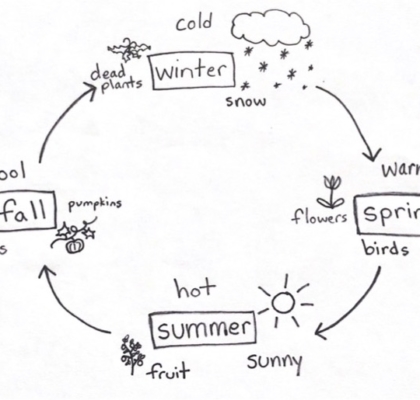
Introduction to Weather & Seasonality
Investigation Description:
Ask students to think about how much the weather has changed since they began school in August. Just as we have changed what we wear and the activities we do outside, there are also many changes in the garden because of the weather.
Ask students to quietly observe the weather from their windows for a few moments. Encourage students to think about the temperature (touch the window!), what the sky looks like, how many plants are growing, what colors the plants are and how big they are, if they see animals, etc. Then have students share their observations!
Have students describe the weather in the current season and explain how that impacts the plants/gardens outside. What did they observe that tells us what season it is?
Write and draw pictures on a paper or whiteboard (3-6 ideas will do) to represent what students tell you.
Some examples could include cold, snowy, short days, not a lot of plants growing, many plants dying. Ask students what season comes next, and to imagine what the garden will look like then, writing and drawing examples on the board.
Do the same for the other seasons of the year, in order, drawing arrows connecting each one. You can ask students to draw along with you, if you’d like!
Time: 15-20 minutes
Teacher Materials: Something to draw on so that your students can see as you draw
Student Materials: Paper and writing/drawing utensils (optional)
This virtual investigation is adapted from: Kindergarten – The Seasons of the Garden
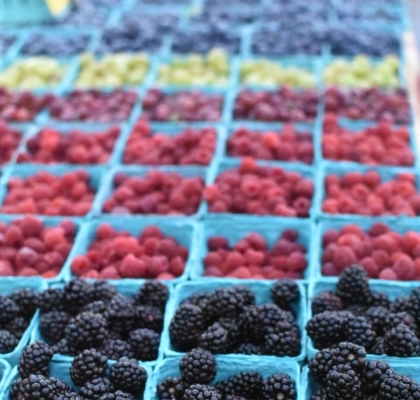
Design Your Own Seasonal Restaurant
Investigation Description:
Ask students to create their own seasonal restaurant or bakery.
Have students draw what they would like their restaurant to look like and brainstorm what types of food they want to be served. Then, have students come up with a seasonal menu, having one specialty item for each season that corresponds with available produce. Encourage students to be as creative as possible!
(One example of a student who did this activity… She opened a pie shop- Fall= apple pie, Winter= pumpkin pie, Spring= peach pie, Summer= mixed berry pie).
Time: 15- 20 minutes
Teacher Materials: Examples of seasonal produce to facilitate ideas
Student Materials: Paper and drawing/writing utensils
This virtual investigation is adapted from: Kindergarten – The Seasons of the Garden
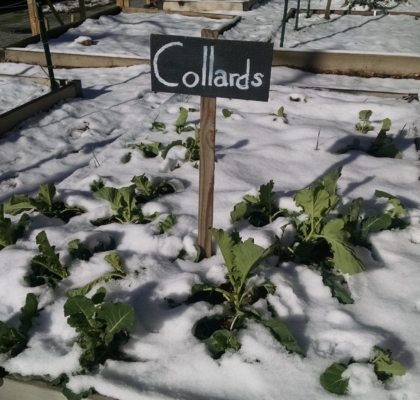
Drawing the Garden through the Seasons
Investigation Description:
Prior to your students coming to class, divide your paper into four quadrants, each labeled with one season (one quadrant for Fall, one for winter, one for spring, and one for summer). Then draw a picture in each that shows what a garden in DC looks like during that season.
For this investigation, let students share their thoughts about each season. Ask, what does winter feel like, sound like, smell like, etc? And repeat this process for each season.
Then show students your Garden through the Seasons art project, and tell them that they can make their own! They can imagine the garden during each season, and draw their very own pictures of the garden in each season. Students may need verbal help learning how to fold their paper to make quadrants.
If a student does not want to draw, tell them they can make a song or dance about the garden through the seasons, or even a poem!
Time: 10-20 minutes
Teacher Materials: Example “Garden through the Seasons” drawing
Student Materials: Paper and writing/drawing utensils
This virtual investigation is adapted from: 1st Grade – The Winter Garden
